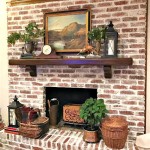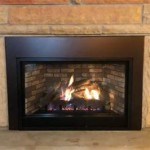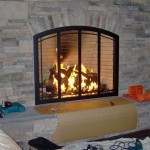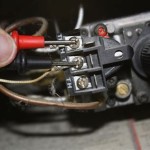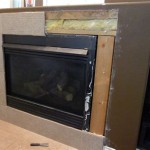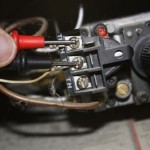Brick for Fireplace Construction: A Comprehensive Guide
The fireplace, a central feature in many homes, provides warmth, ambiance, and a focal point for social gatherings. The selection of materials for fireplace construction is crucial, with brick consistently being a popular and reliable choice. This article delves into the various aspects of brick for fireplace construction, examining its properties, types, installation methods, and considerations for optimal performance and longevity.
Brick, composed primarily of clay and shale, is a durable and versatile material. Its inherent fire resistance makes it ideally suited for the high-temperature environment within a fireplace. Furthermore, brick's aesthetic appeal, offering a range of colors, textures, and bonding patterns, allows for customization to complement diverse architectural styles. The following sections explore key aspects of selecting and using brick for fireplace construction.
Understanding the Properties of Fireplace Brick
The suitability of brick for fireplace construction hinges on several key properties that contribute to its performance in high-temperature environments. These properties dictate its ability to withstand thermal stress, resist degradation, and maintain structural integrity over time. Understanding these characteristics is paramount in making informed decisions about brick selection.
Fire Resistance:
This is arguably the most critical property. Fireplace bricks are specifically manufactured to withstand extremely high temperatures without melting, cracking, or undergoing significant structural changes. Standard bricks, while adequate for general construction, may not possess the necessary fire resistance for sustained exposure to the intense heat of a fireplace. Firebrick, also known as refractory brick, is specifically designed for high-temperature applications, exhibiting superior resistance to heat and thermal shock.Thermal Conductivity:
Thermal conductivity refers to the ability of a material to transfer heat. In the context of a fireplace, a lower thermal conductivity is generally desirable for the firebox itself. This helps to retain heat within the firebox, maximizing efficiency and reducing heat loss through the surrounding structure. However, for the exterior of the fireplace, some degree of thermal conductivity is needed to radiate heat into the room. The balance between heat retention and radiation is a key design consideration.Thermal Expansion:
All materials expand when heated, and brick is no exception. However, the rate of thermal expansion varies depending on the type of brick and its composition. Fireplace bricks need to have a low and predictable rate of thermal expansion to minimize stress within the structure as it heats and cools. Excessive thermal expansion can lead to cracking and eventual failure of the fireplace.Density and Compressive Strength:
Brick density and compressive strength are important indicators of its overall durability and resistance to physical stress. A dense brick with high compressive strength can withstand the weight of the structure above it, resist abrasion from cleaning and maintenance, and minimize water absorption. Higher density also contributes to improved thermal performance.Water Absorption:
Brick porosity affects its water absorption rate. While all bricks absorb some moisture, excessive water absorption can lead to damage from freeze-thaw cycles, especially in colder climates. Water absorbed into the brick expands when it freezes, potentially causing cracks and spalling (surface flaking). Fireplace bricks should have a relatively low water absorption rate to ensure longevity.Types of Brick Used in Fireplace Construction
The selection of the appropriate brick type is critical for ensuring the safety, efficiency, and longevity of a fireplace. Different types of brick offer varying levels of fire resistance, thermal properties, and aesthetic characteristics. Understanding these differences is essential for choosing the optimal material for each component of the fireplace.
Firebrick (Refractory Brick):
This is the most common and essential type of brick used in the firebox, the area directly exposed to the flames. Firebrick is manufactured from a special blend of fire clays and is subjected to very high firing temperatures. This results in a brick with exceptional fire resistance, low thermal expansion, and high heat retention. It is designed to withstand temperatures exceeding 2000°F without significant degradation. Common firebrick shapes include standard brick sizes, as well as arched or wedge-shaped bricks for specialized applications.Common Brick:
Also known as building brick, this type is typically used for the exterior of the fireplace and chimney. It is less expensive than firebrick and provides structural support and aesthetic appeal. While common brick is durable, it is not designed for direct exposure to high temperatures and should not be used in the firebox. Common brick is available in various colors, textures, and sizes, allowing for a wide range of design options.Face Brick:
Similar to common brick, face brick is used for the exterior of the fireplace but is chosen specifically for its aesthetic qualities. It often features a more refined surface finish and may be available in a wider range of colors and textures. Face brick can be used to create a decorative and visually appealing fireplace facade that complements the surrounding interior design.Paver Brick:
While primarily used for paving applications, paver brick can be incorporated into fireplace designs for hearths or decorative elements. Paver brick is typically denser and more durable than common brick, offering improved resistance to abrasion and weathering. It is available in various shapes, sizes, and colors, allowing for creative design possibilities.Specialty Bricks:
In addition to the standard types, specialized bricks are available for specific fireplace applications. These include arch bricks for creating curved openings, soap bricks for lining the firebox walls, and split bricks for creating veneer surfaces. Specialty bricks can enhance the functionality and aesthetic appeal of a fireplace.Installation Techniques and Considerations
Proper installation is paramount to the performance and safety of a brick fireplace. Even the highest quality bricks will fail prematurely if they are not installed correctly. The following outlines key aspects of brick fireplace installation, emphasizing best practices and crucial considerations.
Mortar Selection:
The choice of mortar is as important as the choice of brick. For firebrick within the firebox, a refractory mortar specifically designed for high-temperature applications must be used. This type of mortar is formulated to withstand the extreme heat and thermal cycling within the firebox without cracking or crumbling. For common or face brick on the exterior of the fireplace, a standard masonry mortar is typically used. The mortar should be compatible with the type of brick being used and should be mixed according to the manufacturer's instructions.Foundation and Hearth Construction:
A solid and level foundation is essential for supporting the weight of the fireplace. The foundation should extend below the frost line to prevent movement due to freezing and thawing. The hearth, the area in front of the fireplace opening, should be constructed of non-combustible materials, such as brick or stone, and should extend a sufficient distance from the fireplace opening to protect the surrounding floor from sparks and embers. Local building codes typically specify the minimum hearth dimensions.Firebox Construction:
The firebox should be constructed using firebrick and refractory mortar. The bricks should be laid in a staggered pattern to create a strong and durable structure. The mortar joints should be thin and uniform to minimize thermal stress. Proper ventilation is essential for efficient combustion. The firebox should be designed with an appropriate size and shape for the intended fuel and usage.Chimney Construction:
The chimney provides a pathway for exhaust gases to escape and creates draft for combustion. The chimney should be constructed of brick or other approved non-combustible materials. It should extend above the roof line to ensure proper draft. The chimney should be lined with a flue liner, typically made of clay or metal, to protect the brickwork from the corrosive effects of exhaust gases and creosote buildup. Regular chimney inspections and cleaning are essential for preventing chimney fires and ensuring proper ventilation.Expansion Joints:
Brick structures expand and contract with changes in temperature. To accommodate this movement, expansion joints should be incorporated into the fireplace and chimney. These joints allow for thermal expansion without causing stress cracks in the brickwork. The location and design of expansion joints should be carefully considered to ensure their effectiveness.Adherence to Building Codes:
Fireplace construction is subject to local building codes and regulations. It is essential to obtain the necessary permits and to ensure that the construction complies with all applicable codes. Building codes address various aspects of fireplace construction, including fire safety, structural integrity, and ventilation. Compliance with building codes ensures the safety and legality of the fireplace installation.Professional Installation:
Given the complexity and critical safety considerations involved in fireplace construction, it is generally recommended to hire a qualified and experienced mason. A professional mason has the knowledge, skills, and experience to ensure that the fireplace is constructed properly and safely. Proper installation is essential for maximizing the performance and longevity of the fireplace.
Mortar Wash Brick Fireplace Makeover Dimples And Tangles

40 Brick Fireplace Ideas Captivating Showstoppers With Timeless Charm Makeover White Wash

Red Brick Fireplace Ideas Beautiful Designs Decor Fireplaces Makeover

Building An Electric Fireplace With Brick Facade

57 Beautiful And Timeless Brick Fireplaces Digsdigs

Antique Brick And White Molding Fireplace Makeover Maison De Pax

30 Gorgeous Painted Brick Fireplace Ideas

42 Painted Brick Fireplace Gorgeous Color

5 Fireplaces You Ll Want To Curl Up In Front Of Midland Brick

Our Ugly Brick Fireplace He Vetoes Painting It Laurel Home

